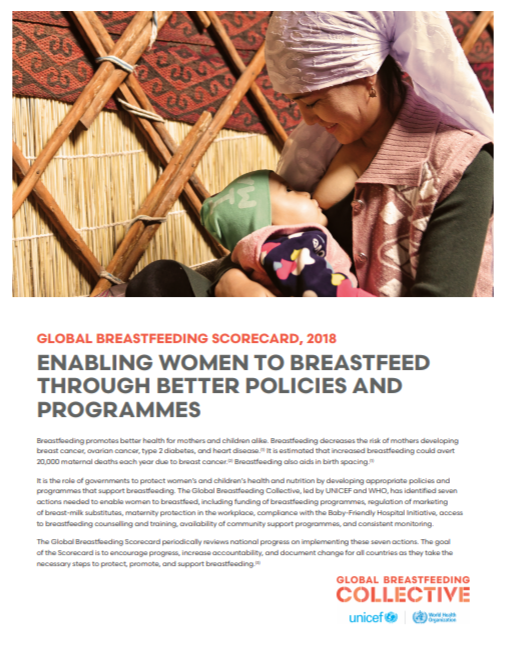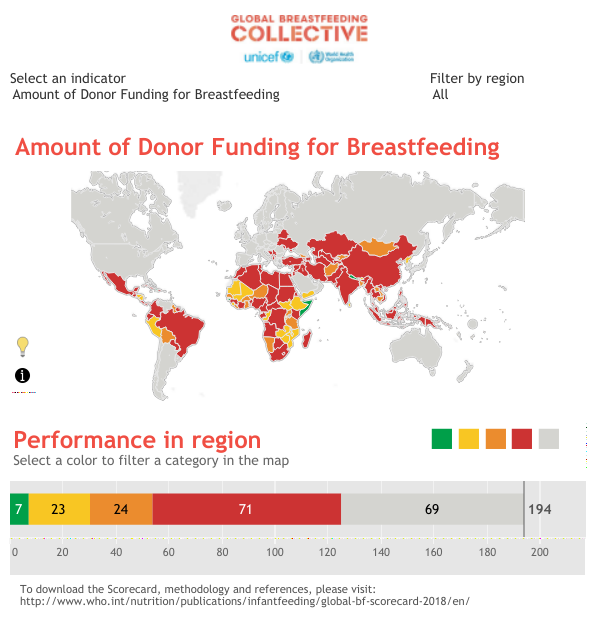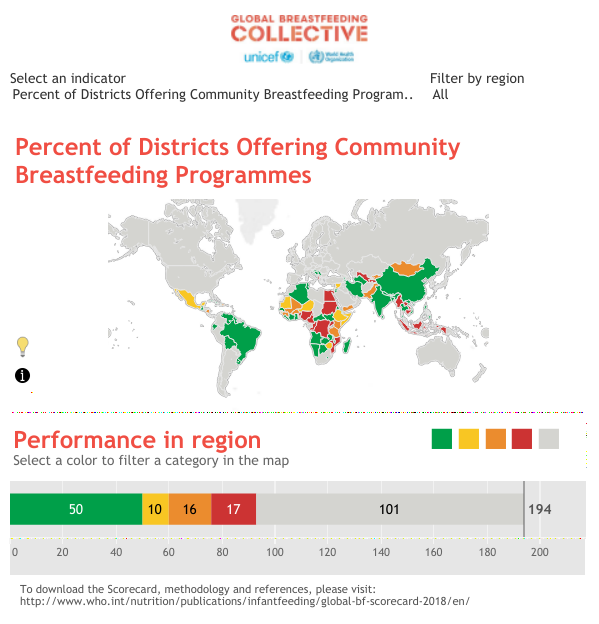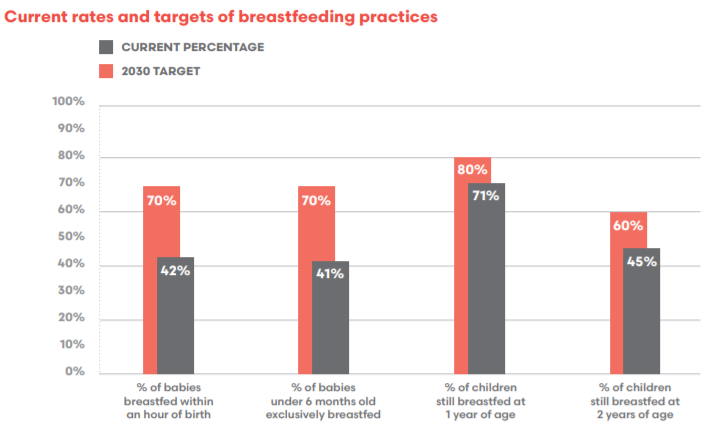No country in the world has met all guidelines outlined by the World Health Organization (WHO) and United Nations Children’s Fund (UNICEF) for a breastfeeding enabling environment.
Led by WHO and UNICEF, the Global Breastfeeding Collective kicked off World Breastfeeding Week by releasing the 2018 Global Breastfeeding Scorecard. The 2018 Scorecard depicts a sobering reality: all countries, regardless of wealth, fall short from optimally supporting women to breastfeed. Breastfeeding is a universal challenge for all mothers.

Indicator performance
The Global Breastfeeding Scorecard tracks a total of 12 indicators covering two domains. Performance of these indicators is listed in the Scorecard and can be explored using a virtual dashboard.
Breastfeeding policies and programs indicators:
- Amount of Donor Funding for Breastfeeding
- Status of Compliance with the International Code of Marketing of Breast-Milk Substitutes (BMS)
- Status of Paid Maternity Leave
- Status of Ten Steps to Successful Breastfeeding (Baby-friendly Hospital Initiative)
- Percent of Primary Health Care Facilities Offering Infant and Young Child Feeding (IYCF) Counselling
- Percent of Districts Offering Community Breastfeeding Programs
- Last Date of World Breastfeeding Trends Initiative (WBTi) Assessment
- Last Date of Exclusive Breastfeeding Data
Global progress to achieve targets for these indicators is mixed. 66 countries—primarily low- and middle-income countries (LMICs)—comply with many or all provisions in the International Code of Marketing BMS. As a result, in these countries there are greater restrictions on how BMS companies can market their products. In contrast, most high-income countries have implemented few or no aspects of the BMS code.
Women in 64 countries do not give birth in facilities designated as “baby-friendly.” The “baby-friendly” steps represent a suite of important breastfeeding counseling and support activities to encourage breastfeeding.
Substantial country-level data is missing for three Scorecard indicators: (1) Donor Funding for Breastfeeding; (2) Primary Health Care Facilities Offering IYCF Counselling; and (3) Percent of Districts Offering Community Breastfeeding Programs (Figures 1-3).

Figure 1

Figure 2

Figure 3
Breastfeeding outcomes indicators:
- Rate of Early Initiation of Breastfeeding
- Rate of Exclusive Breastfeeding for First Six Months
- Rate of Breastfeeding at One Year
- Rate of Breastfeeding at Two Year
Globally, less than half of infants are breastfed within an hour of birth or exclusively breastfed for the first six months (Figure 4). In 23 countries—all LMICs—over 60% of infants are exclusively breastfed for the first six months.
Data availability
Results from the 2017 and 2018 Scorecards are similar, as the 2017 Scorecard also emphasizes how all countries failed to meet breastfeeding guidelines. However, both Scorecards are populated with similar data (2017 sources, 2018 sources). Data for five indicators (all breastfeeding outcome indicators and date of exclusive breastfeeding) are primarily from Demographic and Health Surveys (DHS) and Multiple Indicator Cluster Surveys (MICS), which are conducted every three to five years. Both scorecards use identical data to calculate the status of paid maternity leave and ten steps to successful breastfeeding indicators. Availability of more data will help more accurately understand progress towards achieving breastfeeding targets over time.
Other nutrition visualization tools
The Global Breastfeeding Scorecard is an important advocacy and accountability tool to galvanize support for mothers to breastfed. Over the past year, Data for Decisions to Expand Nutrition Transformation (DataDENT) has been reviewing existing nutrition data visualization tools—including the Global Breastfeeding Scorecard—and exploring how information in these tools is used. Results from this landscaping will be available in the coming months.

